The British Army is moving forward with plans to replace its current standard-issue rifle, the L85A3 – more commonly known as the SA80A3 – under the developing Project Grayburn, the Ministry of Defence has confirmed.
Responding to a series of Parliamentary Written Questions from Ben Obese-Jecty MP (Conservative – Huntingdon) on 28 April, Minister of State for Defence Maria Eagle outlined the progress being made toward a new service rifle.
“The British Army’s projected Out of Service Date for the L85A3 (SA80A3) variant of the L85 rifle family is currently 2030,” she said. “The replacement for the L85 rifle will be procured under Project GRAYBURN, which is currently in the concept phase with the aim of identifying and understanding the capability requirements.”
As part of the concept work, “various rifle calibres are being considered,” with a range of factors under review, including performance, interoperability with allies, and technological complexity. The Minister added that the Army is taking “measures to mitigate any risk of potential capability vulnerabilities” during the transition process.
Ms Eagle also confirmed that Project Grayburn had recently made progress through “discussions with manufacturers and industry experts to analyse the influence of the Land Industrial Strategy and UK manufacturing on the project.” This suggests a strong interest in supporting domestic industrial capacity as part of the future programme.
However, a full cost estimate for the programme has not yet been established. “Due to the current phase of the project, we are unable to provide a formal cost estimation yet,” Ms Eagle explained. “This will be established once the scope, timeline and complexity of the project is confirmed but may be subject to commercial sensitivities.”
The L85A3, the latest upgrade of the SA80 series, has served as the British military’s standard-issue rifle for over three decades. Introduced in the 1980s, the rifle has undergone several modifications to address initial reliability and performance issues, with the A3 version featuring significant improvements in weight, durability, and compatibility with modern optics.
Despite these upgrades, the need for a modern replacement capable of meeting the demands of 21st-century combat has become increasingly apparent.
Project GRAYBURN aims to deliver a rifle suited to the ‘changing dynamics of modern warfare’. Although specific details about the successor rifle remain unclear, modularity, adaptability to advanced optics and accessories, and enhanced reliability are likely to be key factors. The timeline for the project remains uncertain, but with the concept phase underway, further updates are anticipated as the MOD refines its requirements and begins exploring design and procurement options.


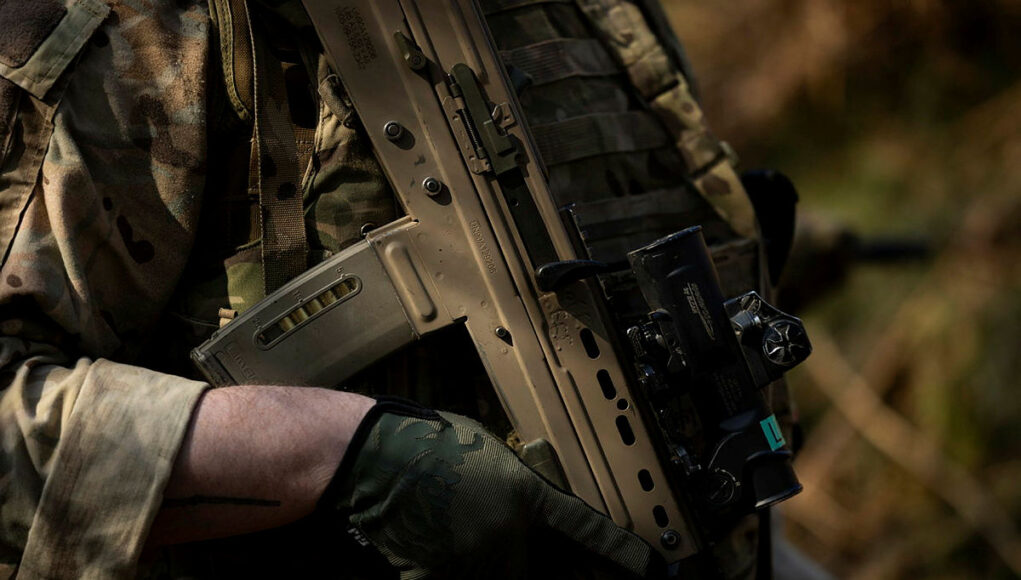
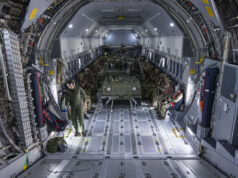



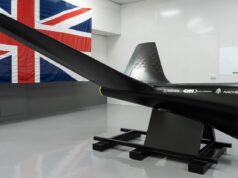


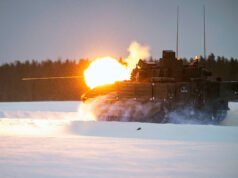

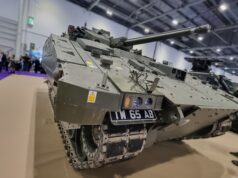

The army is so small now you would hope we can go high end like the Marines with the L403A1
There’s absolutely no point buying L403’s for the wider army. It’s a very expensive rifle and, for the average soldier, the juice is not worth the squeeze. It makes sense for, for example, Rangers where you need to have been in the army for several years, and then get regular range time with plenty of opportunity to shoot, and 1-on-1 tuition. But a Signaler, or an RLC storeman who gets to shoot once or twice a year maybe, and gets pushed through their shooting on a factory line? You can give them a rifle that’s 1/10th the price of a 403, and you’ll get exactly the same result.
You say the Army is small, but to acquire enough 403’s to replace all 160,000 SA80 variants in service would cost 1.5 billion£. (That’s enough for 300 Challenger 3 tanks).
Good scale of costs.. in reality you want your average rifle to be cheap, reliable and easy to use. Section lethality needs to be focused around things like making sure the AI have a IFV with a cannon, section support wespons, the wider used of 80mm mortars, access to drones communication, support etc.
Google pay 92 every hour my last check was 8400 working 10 hours per week on the web. My more youthful sibling companion has been averaging 18k throughout recent months and he works around 24 hours per week. I cannot accept how simple it was once I attempted it out.This is my main thing……….,.,.,.. WORKSTAR1.COM
Lol, the RM has bought 1500 ISH KS1 and 1500 ISH Sig mcx for the operational strike/recce/ boarding teams. That’s 3000 ISH in total with only half that being the 10 grand a pop KS1……. You think the army thats still over 23 times the size of that and consists of support personnel and all sorts, then the rest of the armed forces factors in, are going to get the KS1 ? Be realistic, it’s not happening and there’s absolutely no requirement for it to happen.
Correction, everything I see points to the MOD buying 1,600 KS1’s, not the RM. That means the 1,600 is split between the RM and the Rangers.
So, picking the wheat from the chaff there. Discussions with manufacturers about domestic manufacturing stood out for me, whatever is selected will be built here in the UK.
Sig Sauer & Beretta have made noises about building facilities in the UK & H&K has a facility in Nottingham.
For me the current platforms in the running are:
Sig Sauer MCX LT
Beretta NARP
Sako M23
HK 416
HK 433
All this discussing calibre is silly, everyone is still using 5.56 X 45mm, but the Sig at least makes a big deal about their MCX platform being multi-calubre capable.
I’m willing to bet that later this year, when costings are worked out, the selection is very likely to be either a Sig or HK, but it will definitely be a Armalite 15 type in 5.56mm.
Of course the inital problems of the current rifle will be brought up, but I would remind everyone of the problems the M16 also had when introduced in the 1960’s.
Resolved by asking HK to fix them as I recall. Maybe just go straight to HK this time around?
H&K didn’t do anything for the weight, not sure if the A3 fixed this either.
That said there’s no guarantee the next one won’t be the same anyway.
Yeah but the weight was never the deal breaker.
I’d agree it wasn’t bad enough to warrant the expense of replacing the system but it’s still roughly one loaded magazine heavier than the AR-18 it’s derived from.
I hope for a better result in the future.
Please whatever rifle you pick make sure its ambidextrous.
I have to agree with that. Shooting wrong handed is such a pain and unnatural.
I have to agree with that. Shooting wrong handed is such a pain and unnatural.
Absolutely, I was stuffed when the SA80 came in. Having a weak right eye was never really an issue for me with the SLR and firing left handed was just as natural. When it came to APWT using the SA80 the people on both sides of me used to fire at my targets to get me through, one of the reasons I took redundancy.
I accidently did that once. On a range night shoot I shot the target to my right instead of mine. Luckily the guy to my right was a good shot so with 20 hits on his and none on mine we both got awarded 10/10!
Cross lane firing happens a lot with Optics to be fair, since unlike with Iron sights your peripheral vision is limited and you can easily get tunnel vision. Some range layouts also don’t help; recently I was firing on a range near Winchester and almost everyone on my lane cross lane fired because of where the target was made it unclear at a glance if it was on my lane or the lane next to it.
Just buy CZ Bren 3s.
Is this a priority?
What are the “changing dynamics of modern warfare” regards one’s individual weapon?
It definitely isn’t, except that the physical L85’s in inventory are just getting long in the tooth and will need a replacement eventually just from age.
As for changing dynamics of warfare bit, I suppose that means things like modern optics. L85 couldn’t even mount picatinny optics until the adapter was made post A2 modifications, and inline sights like Thermal Scopes couldn’t be used until the A3 came along. I’m also sure there will be interest in making sure the next IW is compatible with things like SMASH CUAS sights. There’s also, given the Grayburn seems not to have settles on a caliber the bug bear of 5.56 vs 6.8.
Thanks D.
Points all taken.
I feel for the outlay like you described above for high end I’d rather see that spent on the RA, state of the art sigint or DF kit, and getting weapons onto Boxer bigger than an MG.
I’d argue that a Armoured Infantry Platoon would gain considerably more from having a few 30mm’s than every solder being equipped with a 403 that’s for sure. But yeah, the comparison I’d make is that the RM and Rangers spend about 9,000£ per L403, while the French Army spend 1,400€ per 416F. I’d argue that the expense makes sense for the Royals and Rangers for a variety of reasons, but for the wider army we should be looking at something more in the French price range.
Agreed. Gucci for quality high end soldiers makes sense.
Not for all the “Green Army.”
100% agree.
Interesting that the 416 has almost become the default, including USMC. I’ve been increasingly interested in the US Army experience in trialling XM7 – they still aren’t fully convinced; potentially even have to re-write the marksmanship handbook as the recoil is sufficient to make the current front-facing standing position untenable. Also need to swap out all of their ranges to take into account the larger stopping power of the round.
All doable of course, but really fascinating that the USMC are sticking with 5.56.
We all know, that we need a Rifle that has good ergonomics, is reliable, relatively inexpensive and can be upgraded when needed. I think the 416 or similar fills all of those.
In agreement with BobA below. Just can’t reply/add to his comment.
With respect to the 5.56 vs 6.8 question. The XM7 is using a 20 round mag compared to the previous M4/AR15 30 round mag. Does this really make a difference. Well for some of us who served and carried the 7.62 SLR, before swapping to the “ultralight” L85, yes most definitely. The ability to place pretty tightly grouped shots on rapid fire in the standing position, was something really new. As to be brutally honest, you had to wait of few moments for things to settle down, when rapid firing the SLR to get a “respectable” grouping.
The XM7 is firing the Sig 6.8mm x 51mm hybrid cartridge, which has the same length as the NATO 7.62×51 cartridge. The bullet has a better ballistic coefficient, as its slightly longer than the 7.62 bullet, but narrower, with slightly less bullet weight of 135 grains vs 147 grains. However, the big difference is the propellent. It generates significantly more oomph, generating a muzzle velocity of 3000ft/s (910m/s) compared with the 7.62’s 2800ft/s (850m/s), shot from a 16″ barrel. This means the bullet over 1000m flies with a flatter trajectory and imparts more energy when it hits the target. When compared to the 5.56×45, the bullet weight is quite a bit lighter at 62 grains, but has a muzzle velocity of 3100ft/s (940m/s). However, it’s the bullet’s lightness that is its Achilles heel. As it means it is more affected by the environment and air drag, which is why it slows down faster. Additional the energy it releases into the target will be much lower.
The disadvantage of the 6.8 is the same as the 7.62, felt recoil. You can easily blat 20 rounds down range and not think about it. Yes, it will kick in the shoulder, but its manageable. However, like in the contacts we were facing in Afghan/Iraq, where you could quickly burn through 5 mags trying to win the initial firefight. After blatting through 5 mags of 6.8, you will definitely feel it. Meaning it becomes more difficult and fatiguing to place aimed shots. The other point to mention is the amount of bullets you could carry. I was carrying a bandolier of 150 rounds and some 8 mags loaded with 30 rounds each, giving a total of 390 rounds of 5.56. Bearing in mind the 6.8×51 rounds weighs nearly 3 times that of the 5.56. Don’t expect the same loadouts to be carried.
Notwithstanding the pros and cons between 5.56, 6.8 and 7.62. I do see a point in the heavier round, as it will most definitely put someone on their ar*e, even when plated up. But a lot of the issue the US were facing in Iraq and Afghan, was due to them using the M4, with the shorter barrel than the standard AR. Which meant that they were just about effective at 300m. Whereas the L85A2, with the longer barrel was good to 400m and with the forward grip bipod and ACOG good to 500m. The “useless” L86, with an ACOG could easily place really good groupings at 600m.
On my last tour in Afghan, we were trialling the HK416. we found it significantly better at coping with crap ammunition, compared to the Canadians C7/8s. As the gas piston arrangement was more resilient to fouling compared to the direct impingement method used in the C7/8s. I found everything else comparable, though we were using ACOG sights that also incorporated a red dot sight. The Canadians had a comparable sight, but without the additional red dot. Which made life much easier when clear buildings. After having used the L85 for years, the 416 internally is much the same. So maintenance and cleaning was very similar. The main upside was how much more ergonomic it was, for both left and right shoulder shooting.
To be fair Dern, the only original Enfield/Nottingham part of the A3 is the TMH, everything else has been replaced during the A2/3 rebuilds.
Replacing the TMH wouldn’t be too demanding, its a straight forward piece of engineering.
The A3 could well serve on for many years to come yet.
A buy of say 30,000 new rifles would be enough to equip all the teeth elements.
The TMH got replaced in the A2 upgrades anyway (or at least the internals did). So yeah the A3 has AFAIK 0 original A1 parts left in it. That being said even the A2 pieces are long in the tooth having been through 20 years of wear and tear and a few small wars. I’m not saying they need to be replaced today, just at some point those A2 parts are going to wear out, and it’ll become a question of increasingly costly maintenance upgrades or replacement, and the 2030’s will probably be a good place to aim off for the gradual retirement of the system.
The Americans have chosen the XM7 (aka SIG MCX Spear) which uses a 6.8×51mm round. Extra punch to deal with body armour, and to go through walls and lightly armoured vehicles. Rounds are probably hugely expensive with them being new and limited customer/manufacturing base.
But if the Yanks are looking at increased firepower through using a new calibre we should be as well. Not necessarily what they’ve chosen, and ideally as part of a Euro-NATO investigation.
We have the Sig MCX (not Spear) for use where I work. They are far superior to the A3, especially after firing a reasonable few magazines, 100% night and day. Although they are 5.56×45mm calibre.
That surprised me.
I read that the 6.8 round can go through a level4 plate at 800 yards my got that round must be screaming out of that rifle to do that
Please can we ditch 5.56mm & go to a 6mm or 6.25mm or 6.5mm or 6.8mm. Not fussed which, as long as NATO goes along.
Based on what John?
USMC staying with 5.56. Swedes have just invested in a new rifle in 5.56. French only recently purchased 416, same with the Germans.
US Army still no final decision on the switch to 6.8mm (see my reply to Dern above).
The FN .264 USA / 6.5x43mm LICC is probably the most useful 5.56 replacement. Was shown off at the 2023 Shot show. The US Irregular Warfare Technology Support Directorate was behind it.
There is also 6mm Arc (6.8 SPC necked down for greater range). Also 6.5 Grendel as tweaked by Zastava to work better in assault rifles/light machine guns.
6.8SPC, better stopper than 5.56 but lacks the extra range wanted. 6.8 Sig is really a magnum & probably too much for a 5.56 replacement. I fear my letter in Guns & Ammo, 20+ years ago praising .270 Winchester as a sniper round, might have set minds thinking, but 6.8 Sig is even more souped up than .270 Winchester.
The Yanks have chosen the 6.8, but yes a NATO decision. Something with more stopping power.
Only US Army (see comment above) and they haven’t decided to fully convert (yet)
May currently be the “only”, but not long until all follow suit. Remember there was a right drama with the 5.6mm selection. The UK proposal was a better round. The decision went the US way, no doubt due to the IMC lobbying.
Some manufacturers are now now offering rifles that can (relatively) easily be changed to various calibres. US 6.8mm with a weird hybrid case sounds too much like CCA 40mm. Costs too much for what it delivers. The non hybrid version sounds reasonable (though nothing special). US are also funding a 6mm ARC (or whatever it’s called) round. Then there is 6.5mm Creedmore already being used by US special forces (a 6mm version also exists). In US there are new MG’s in .338 calibre that doesn’t match the common sniper cartridge. It confuses me (no smart comments please) , but who wants to order 100,000 rifles in yesterday’s caliber this week? Does anyone know what tomorrow’s caliber actually is? I doubt even Trump knows.
Most Western armies went for .338 Lapua for their long range sniper rifles. The Americans also wanted to use their new sniper round in a machinegun, so they went for the .338 Norma, as they think it works better through machineguns.
How about just bringing back the7.62 FAL/FN?
Whoa point of order! The black rod of death was the L1A1 SLR not a FN/FAL😉😀
My god why not the Lee Enfield then my god the SLR is a relic now
Surely the OSD is going to be extended. It seems implausible that a rifle could be picked, ordered, produced in sufficient quantities, and the army proficiently and widely trained in its use by 2030; allowing the SA80 to go out of service.
And I think I’m right in saying that we are still converting A2s to A3s right now?
SA80 isn’t perfect, but I don’t see why we’d be in such a rush to replace. By all means supplement it with other rifles in other areas such as the marines etc, which helps take the strain off the remaing stock of serviceable SA80s. But let’s not rush this decision. And maybe let’s see if we can resurrent some domestic rifle production (I know this will come at a cost, but even if the production line goes cold in time, having the tooling etc would be helpful).
*resurrect
Better to never let the production line go cold. Build the line such that under 1 shift a day, 5 days a week, every rifle should be replaced every 30 years. Tooling that gets used for 2 years & then stored for 15 years never seems to be all there when you go looking for it. Neither are the people that knew how to use it.
There are plenty of A2’s that could be upgraded to A3 standard, but I don’t know if the line is still running. No huge rush IMO to replace them, but by the 2030’s the rifles will probably be looking very long in the tooth.
I presume we will keep the SA80’s in storage when it is finally replaced? I was shocked to learn how few SA80’s we actually have.
Did we keep SLR in storage for surge capacity, despite it being a different calibre?
Apparently not.
That has been asked a few times here before.
We gifted a load to Sierre Leonne in 2000 – but we shouldn’t forget they were 30 years old when they left service nearly 40 years ago…
There were 160,000+ A2s and A3s in service at the latest reporting date, which is enough to equip every single regular and reserve I believe (70k army, 30k RN, 30k RAF, 30k reserves). It’s also not clear if the 160k A2s/A3s includes the carbines, which might be a few thousand in addition.
Plus there are thousands of other small arms in service such as the C8, KS1, sharpshooter, GPMG, etc).
In a perfect world we would have a large reserve of rifles in storage (and maybe that will happen with the SA80s once we bring their replacement into service), but in the time it would take train the additional personnell to use them we’d be able to procure more I’m sure.
The numbers released in the recent UKDJ article does not include Carbines. The Article lists L85A2 and A3 in service, the Carbine would be the L22A2.
We don’t tend to keep surplus rifles anymore but it will be interesting to see what they do with the surplus sa80 when we switch to a AR type rifle
Keeping weapons like rifles in storage is a no brainer (at least to anyone that has one). Light Infantry is the only military unit that can be formed out of next to nothing at next to no notice. They do need at least a rifle (& ammunition to go with). Not suggesting they would be front line troops (unless your last name is Putin), but if things go seriously pear shaped, the powers that be need to realise sickles, wood axes & bows are no longer common tools of the masses.
I raise you blanket stackers as a more viable alternative to formed out of nothing in no notice.. 😉
Hard to kill someone with a blanket stacker. Otherwise you have lost me. Perhaps Putin gets it. Who knows?
loggies require less time to competence than Infantry and it’s a direct corelation to civilian occupations. And Loggies are still a military unit.
Kill them with kindness……all warm and cosy if a little itchy!
Since we are gonna be bulk buying the new rifles can we just use what everyone else is predominantly using in Europe? Then we’ll get a weapon that is desired by actual soldiers, it’ll be cheap due to vast orders, it’ll be completely inter-operable with our allies, it won’t rely on America and we’ll be able to get spares and ammunition. A proven design will also avoid the humiliation we suffered with the original S80 – a humiliation which may cost soldiers’ lives if their guns don’t work.
What is predominantly used in Europe? Portugal, Spain, Lithuania, and Latvia use the G-36. France and Germany use the 416, Italy uses the Berreta ARX120, Greece uses the G3, Finland and Poland use their own domestic designs, the Estonians use the MARS-L, the Danes use the C8, the Swiss use Sig, I could go on.
Also the SA80 was effectively a proven design, as it was effectively just a modified AR-18, and the changes HK made to it where not really design changes. The issues with the A1 where much more based around manufacturing quality than design flaws.
What about the retention stud on the gas block that could fit in the gas port and render the weapon into a straight pull repeating rifle. An unnecessary design flaw. Also the choice of plastic for the furniture that got eaten by issue mosquito repellent.
1) I’ve never heard of that happening with L85A1s and I’ve heard a lot of horror stories.
2) HK didn’t change anything about the gas plug (it’s the gas plug that has the retention stud, not the gas block) except the material and polish
3) HK didn’t change the gas block (in which the gas port is located) at all.
4) The choice of plastic was a material, manufacturing issue, not a design issue.
It’s gotta be 5.56 and it’s gonna be AR-like. SCAR is the only non-AR 15 style rifle, otherwise it’s AR15, piston AR15, or an AR18 dressed up to look like an AR15. Interoperability with allies would suggest HK416 (France, Norway, Germany, USMC etc.) but so long as the ammo is interchangeable I don’t see an issue with interoperability occurring.
ARX-160 isn’t AR style. MSBS Grot isn’t either. They are comparatively rare, but non-AR15/18 options do exist.
Aware of their existence but realistically the submissions will be HK416 (maybe 433), SCAR, Beretta NARP, Sako M23, Sig MCX, maybe Colt Canada, maybe LMT, maybe Knights KS2 without the extraordinarily expensive Vortex 1-10. I can’t see Grot being submitted, CZ Bren 3 is a bit of a wildcard whether it will be submitted.
Nothing wrong with the SA80!
To all those banging on about the 6.8mm round that the XM7 fires, please be aware that the full power hybrid stainless steel/brass casing round is so expensive, that the US Army will only be issuing to troops in combat theatres; all training will be conducted with the much less powerful fully brass casing, which means that when the troops do actually need to use it, it will be different to what they have trained with. Shot placement is just as important as power, so you could issue troops with .50 BMG, but if they can’t hit the target, it’s not going to make a difference. Saying that, Bren 3 or HK416.
Yes, but its not just 5.56 vs 6.8 Sig magnum. There are also 6mm Arc, 6.5 Grendel & FN .264 USA/6.5×43 LICC
6mm ARC is a fantastic round but I can’t see that happening